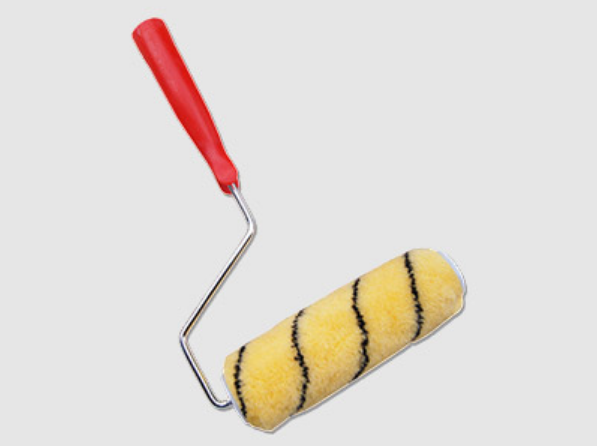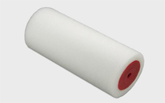How to Use a Paint Roller
Jul. 10, 2024Painting with a roller is a fast and efficient way to apply paint.
So if it's your first time using one, here's our step-by-step guide to using a roller so you avoid streaks, drips and patchy paint.
What you need:
Roller
Roller tray
Extender (if you've got a lot of hard-to-reach places)
Your favourite colour paint
Choosing the Right Roller
Before you start painting, it's crucial to select the right roller for your project. The type of roller you need depends on the surface you're painting and the type of paint you'll be using. Here are your options:
- Short pile (6-8 mm thickness): Ideal for smooth walls and flat surfaces, providing excellent coverage.
- Medium pile (10-12 mm thickness): Suitable for lightly textured walls and ceilings. It picks up more paint, making it a good choice for larger rooms.
- Long pile (20-32 mm thickness): Best for heavily textured walls, such as concrete and outdoor surfaces.
- Foam rollers: Most effective with gloss or varnish for a smooth finish.
- Radiator rollers: Specifically designed for radiators and hard-to-reach areas, thanks to their flexibility and bendability.
Preparing Your Space
Preparation is key to a successful paint job. Begin by protecting your floors and furniture with drop cloths or plastic sheeting. Use painter's tape to mask off trim, windows, and any areas you don't want painted. This will help you achieve clean edges and save time on cleanup.
Step-by-Step Guide to Using a Paint Roller
1. Brush Around the Edges First
Rollers are excellent for covering large areas but can be messy in intricate corners. Start by using a paintbrush to cut in around the edges of your walls, along skirting boards, and around the ceiling. This will create a border that you can blend with your roller.
2. Remove Excess Fuzz
New pile rollers often have excess fuzz that can mix into your paint and create a textured wall. To avoid this, dip the roller in water and let it dry before use. This simple step will remove the fuzz and ensure a smooth application.
3. Fill & Dip
Pour your chosen paint color into a paint tray, but be careful not to overfill it to avoid spills. Dip the roller into the paint and roll it back and forth over the flat section of the tray to evenly coat the roller without saturating it.
4. Start Painting
Using a W pattern, apply light strokes to one section of the wall at a time. This technique helps distribute the paint evenly and prevents streaks. Be mindful of your speed; painting too quickly can create a mist of paint spray. Avoid overworking the paint by repeatedly rolling over the same spot, as this can thin the paint, cause splatters, and leave roller marks.
5. Move on to the Next Section
Once the roller starts to run out of paint, dip it again and focus on a different section of the wall. Paint towards the area you just finished, using overlapping strokes. This will blend the edges seamlessly and create a uniform finish.
Tips for a Professional Finish
Avoid Overloading the Roller
Overloading the roller can cause drips and uneven coverage. Ensure that your roller is well-coated but not dripping with paint. Lightly roll off excess paint on the ridged part of the tray before applying it to the wall.
Maintain a Wet Edge
Keeping a wet edge is crucial for a smooth finish. This means working quickly enough to ensure that the paint on the edges doesn't dry before you blend it with the next section. This technique helps avoid lap marks and creates a consistent look.
Clean Up Properly
After you've finished painting, clean your roller and brushes thoroughly. Use warm, soapy water for water-based paints or the appropriate solvent for oil-based paints. Proper cleaning extends the life of your tools and keeps them ready for future projects.
Common Mistakes to Avoid
Skipping the Primer
Priming is an essential step, especially when painting over dark colors or new drywall. Primer helps the paint adhere better and provides a uniform base for the topcoat.
Using Low-Quality Tools
Invest in high-quality rollers and brushes. Cheap tools can shed fibers, leave streaks, and make your job more difficult. Quality tools provide better coverage and a smoother finish.
Ignoring Drying Times
Allow adequate drying time between coats. Rushing this process can lead to a poor finish and may require additional coats. Follow the paint manufacturer's recommendations for drying times.
Conclusion
Using a paint roller effectively can make a significant difference in the outcome of your painting project. By choosing the right roller, preparing your space, and following the proper techniques, you can achieve professional-looking results.
For more painting tips or to find high-quality painting supplies, contact us or visit our supplier page. We're here to help you with all your painting needs and ensure your project is a success.
















